Uni-T UT208 Handleiding
Uni-T
Meetapparatuur
UT208
Bekijk gratis de handleiding van Uni-T UT208 (2 pagina’s), behorend tot de categorie Meetapparatuur. Deze gids werd als nuttig beoordeeld door 62 mensen en kreeg gemiddeld 4.3 sterren uit 31.5 reviews. Heb je een vraag over Uni-T UT208 of wil je andere gebruikers van dit product iets vragen? Stel een vraag
Pagina 1/2

Overview
This Operating Manual covers information on safety and cautions. Please read the
relevant information carefully and observe all the and strictly.Warnings Notes
Warning
To avoid electric shock or personal injury, read the “Safety Information”
carefully before using the Meter.
Model UT207 and UT208 are 3 5/6 digit AC&DC digital clamp multimeters
( hereafter referred to as "the Meter" ) characterized with stable performance, high
reliability and novel structure. They are designed with large-scale integrated circuits
and dual integral A/D converter as its core and offer full-range overload protection.
The Meter can measure AC/DC Voltage, AC/DC Current, Frequency, Duty Cycle,
Resistance, Diodes, Continuity, Surge Current and etc.
UT208 has an extra temperature feature.
Item Description Qty
1
2
3
4
5
English Operating Manual
Test Lead
Poin Con act t t Tempera ure Probe nly 208) hit (O UT (T s
in luded poinc t c ta t ton ct empera ure probe an c onl be usey d
up to 23 0 . For any measurement is higher than that, the
rod type temperature probe must be used)
Tool box
9V Battery (NEDA1604A or 6LF22)
1 pc
1 pair
1 pair
1 pc
1 pc
Unpacking Inspection
Open the package case and take out the Mete r. yCheck the following items carefull
for any missing or damaged part:
In the event you find any missing or damaged part, please contact you dealerr
immediately.
Safety Information
This Meter complies with IEC61010-1, IEC61010-2-032, Pollution Degree 2,
Overvoltage Category(CAT. 600V, CAT 300V) and Double Insulation standards.Ⅱ Ⅲ
CAT. , , PORTII: Local level appliance ABLE PMEN wi smaller EQUI T etc ., th transient
overvoltages than CAT. III.
CAT. t v , fix t , th r s t ove t s t nIII: Di ibustr ion le el ed in allast ion wi smalle tran ien rvol age ha
CAT. IV
Use the Meter only as specified in this operating manual, otherwise the protection
provided by the Meter may be impaired.
In th manua is l, a W garnin i ifi iti and i dent es cond ons act ons that pos hazards to th e e
user, or may damage the Meter or the equipment under test.
A identifies the information that user should pay attention to.Note
To y, eavoid possible electric shock or personal injur and to avoid possibl
d ge e Met or e e t a e gama to th er to th quip ntme under est, dhere to th followin
rules:
Warning
Before using the Meter inspect the case. Do not use the Meter if it is
damaged or the case (or part of the case) is removed. Look for cracks or
missing plastic. Pay attention to the insulation around the connectors.
Inspect the test leads for damaged insulation or exposed metal. Check th e
test ea l ds for con inuit ty. d ged l ds th enti l m el Re acepl ama test ea wi id ca od
number or electrical specifications before using the Meter.
Do not apply more than the rated voltage, as marked on the Meter betwee , n
the terminals or between any terminal and grounding. If the value to be
measured is unknown, use the maximum measurement position and reduce
the range step by step until a satisfactory reading is obtained.
When measurement has been completed, disconnect the connection between
the test leads and the circuit under test, remove the testing leads away
from the input terminals of the Meter and turn the Meter power off.
The rotary switch should be placed in the right position and no any
changeover of range shall be made during measurement toprevent
damage of the Meter.
Do not carry out the measurement when the Meter’s back case and batter y
compartment are not closed to avoid electric shock.
Do not input higher than 600V between the two Meter’s input terminal to
avoid electric shock and damage to the Meter.
When the Meter working at an effective voltage over 70V in DC or 33V rms is
in AC, special care should be taken for there is danger of electric shock.
Use the proper terminals, function, and range for your measurements.
Do not use or store the Meter in an environment of high temperature,
humidity, explosive, inflammable and strong magnetic field. The performance
of the Meter may deteriorate after dampened.
When using the test leads, keep your fingers behind the finger guards.
To avoid electric shock, do not touch the bare wires, connectors, unused
input terminals or the tested circuit during measurement.
Di ci t a h ge a ge p ito b oresc ectonn rcui power nd disc ar ll high ol-v ta ca ac rs ef
testing resistance, continuity and diode.
Replace the battery as soon as the battery indicator appears. With a
low batter y, the Meter might produce false readings that can lead to electric
shock and personal injury.
When servicing the Meter, use only the replacement parts with the same
model or identical electrical specifications.
The internal circuit of the Meter shall not be altered at will to avoid damage
to the Meter and any accident.
Soft cloth and mild detergent should be used to clean the surface of the
Meter when servicing. No abrasive and solvent should be used to prevent
the surface of the Meter from corrosion, damage and accident.
The Meter is suitable for indoor use.
Turn the Meter off when it is not in use and take out the battery when not
using for a long time.
Constantly check the battery as it may leak when it has been using for
some time, replace the battery as soon as leaking appears. A leaking battery
will damage the Meter.
International Electrical Symbols
AC (Alternating Current)
DC (Direct Current)
AC or DC
Grounding
Double Insulated
Warning. Refer to the Operating Manual
Low Battery Indication
Continuity Test
Diode
Danger of High Voltage
Conforms to Standards of European Union
Figure 1
The Meter Structure (See Figure 1)
Hand ua han G rd to prote user’s s: ct d
from to ro uc t nhing he da ge us area.
T erigger: press the lever to open th
transformer jaws. When the pressur e
on the lever is released, the jaws wil l
close.
Functional Buttons
Input Terminals
LCD Display
Rotary Switch
T ransformer Ja des gned tow: i pi upck
t he AC and DC curren t f t hlowing hroug
the conducto r. It could transfer curren t
to voltage. The tested conductor must
vertically go through the Jaw cente r.
1.
2.
3.
4.
5.
6.
7.
Press button to select the alternate functions includingSELECT
V,, ,%Hz A and (UT208 only).
Starts recording of maximum and minimum values.
Press to st t t ep he display hrough high (MAX) and low (M N) readingI s
at any mode.
Press and hold for one second to exit MAX/MIN mode.
Press to turn on the backlight, repress to turn it off, otherwise
l automatically off after 1 minute.it wil
Functional Buttons
Below table indicated for information about the functional button operations.
Button Operation Performed
SELECT
MAX/MIN
Press to enter the Hold mode in any mode, the MeterHOLD
beeps.
Press HOLD again to exit the Hold mode to return to measuremen t
mode, the Meter beeps.
Turning the rotary switch or pressing button can also SELECT
exit Hold mode.
HOLD
Pres buttons HOLD for seconds when 2 turning on the Meter to
display full icon.
When the Meter is at %Hz, V and A , press Hz to measur e
frequency and duty cycle.
Hz
ZERO ZEROPress to zeroing the display before measuring DC current.
The Effectiveness of Functional Buttons
N i sw i lowot every funct onal buttons can be used on every rotary itch posit ons. Be
t able describe on which rotary switch position the functions of buttons are available.
SELECT MAX/MIN HOLD Hz ZERO
N/A
%Hz
66A
1000A
66A
1000A
N/A
N/A
N/A
N/A
N/AN/A
N/A
N/A
N/A
N/A
N/A
N/A
Rotary Switch
Positions
V
Functional Buttons
o
CoF
Figure 2
Display Symbols (See Figure 2)
Number Symbol Meaning
1
2
3
4
5
6
7
8
9
10
11
INRUSH
MIN
MAX
ZERO
Indicator for Surge current
Minimum reading displayed
Maximum reading displayed
Indicator for zeroing
Data hold is active
The Meter is in the auto range mode in which th e
Me ert au oma icallyt t s ts telec he range with t he best
resolution.
True RMS indicator
Indicator for AC voltage or current
Indicates negative reading
Indicator for DC voltage or current
The battery is low.
W : To l s, charning avoid fa se reading whi
could lead to possible electric shock or
personal injur y, replace the battery as soon as
the battery indicator appears.
H
AUTO
RMS
AC
DC
12
13
14
15
16
17
18
19
20
21
Sleep mode is on
Test of diode
The continuity buzzer is on
: Ohm. The unit of resistance.
k :Kilohm. 1x103or 1000 ohms
M :Megohm. 1x106or 1,000,000 ohms
Hz: Hertz. The unit of frequency.
KHz: Kilohertz. 1x103
or 1000 hertz.
MHz: Meghertz. 1x10
6 or1,000,000 hertz.
Volts. The unit of voltage.
mV: Millivolt. 1x10-3 or 0.001 volts
Amperes (amps). The unit of current.
The unit of temperature:
:Centigrade temperature
The unit of temperature:
:Fahrenheit temperature
Duty cycle measurement
,K ,M
H MHzz, kHz,
mV, V
A
%
A. Measuring DC/AC ( See Figure 3 )
To avoid harm to you or damage to the Meter from eletric shock, do not
attempt to measure voltages higher than 600V AC/DC, although readings may
be obtained.
Red Black
Red Black
Measurement Operation
Figure 3
Warning
The DC Voltage ranges are: 6.6V, 66V and 600V
The AC Voltage ranges are: 6.6V, 66V and 600V
To measure DC/AC voltages, connect the Meter as follows:
Insert the red test lead into the V Hz COM terminal and black test lead into the
terminal.
Set the rotary switch to V . DC measurement mode and auto ranging is a
default. Press to switch to AC measurement mode.SELECT
Press Hz u q l but button to meas re fre uency or duty cyc e, the freque cy ut n or d y
cycle readings obtained from this range is only for reference.
Connect the test leads across with the object being measured.
The measured value shows on the display.
1.
2.
3.
4.
Note
When DC/AC voltage measurement has been completed, disconnect the connection
between the testing leads and the circuit under test and remove testing lead s
from the input terminals.
B. Measuring Resistance (See Figure 4)
To avoid damage to the Meter or to the device s
under test, disconnect circuit power and
disc arh ge a ll the high- oltv age ca ac rsp ito be refo
measuring resistance.
The resistance ranges are:
660 , 6.6k , 66k , 660k , 6.6M and 66M
To measure resistance, connect the Meter as
follows:
Insert the red test lead into the V Hz terminal
and black test lead into the terminal. COM
Set t rotary s tc to he wi h . Resist cean
measurement is a default or press SELECT
to switch to measurement mode.
1.
2.
Red Black
Figure 4
Warning
Connect the test leads across with the object being measured.
The measured value shows on the display.
3.
Note
To tob ain a more precise r , y c remove t eading ou ould he objects being ed test from
the circuit during measurement.
When resistance measurement has been completed, disconnect the connection
between the testing leads and the circuit under test and remove testing leads
from the input terminals.
C. Testing Diodes (See Figure 5)
To avoid damage to the Meter or to the device s
under test, disconnect circuit power an d
di llsc arh ge a th high- olte v age ca ac rsp ito be refo
testing diodes.
Use the diode test to check diodes, transistors, an d
other semiconductor devices. The diode test send s
a ncurrent through the semicondutor junction, the
measure the voltage drop across the junction. A
good silicon junction drops between 0.5V and 0.8 V.
To test the diode out of a circuit, connect the Meter
as follows: Figure 5
Warning
Red Black
Insert the red test lead into the terminal and black test lead into theV Hz COM
terminal.
Set the rotary switch to . Press to switch to measurementSELECT
mode.
For forward voltage drop readings on any semiconductor component, place the
red test lead on the component’s anode and place the black test lead on the
component’s cathode.
1.
2.
3.
Note
To tob ain a more precise r , y c remove t eading ou ould he obje beingcts test fred om
the circuit during measurement.
When diode testing has been completed, disconnect the connection between th e
testing leads and the circuit under test and remove testing leads from the input
terminals.
D. Testing for Continuity (See Figure 6)
To avoid damag to the Meter or to the device s
under test, disconnect circuit power an d
di llsc arh ge a th high- olte v age ca ac rsp ito be refo
measuring continuity.
To test for continuity, connect the Meter as follows:
Insert the red test lead into the V Hz terminal
and the black test lead into the terminal.COM
Set the rotary switch to and press
SELECT button to select measurement mode.
The buzzer sounds if the resistance of a circuit
under test is less than 30 .
The buzzer may or may not sound if the
res stanci e of a ci it er rcu und test is b wet een 30 to 100 .
The buzzer does not sound if the resistance of
1.
2.
3.
Red Black
Warning
Figure 6
a circuit under test is higher than 100 .
Note
When continuity testing has been completed, disconnect the connection between
t t t g t t t t t t f thehe es in leads and he circui under es and remove es ing leads rom
input terminals.
E. Measuring Frequency (See Figure 7)
To avoid harm to you or damage to the Meter
from eletric shock, do not attempt to measur e
voltages higher than 600V AC/DC, althoug h
readings may be obtained.
The frequency ranges are:
660Hz, 6. , 6kHz 66kHz, 660kHz, 6.6MHz and 66MHz.
To measure frequenc y, connect the Meter as follows:
Insert the red test lead into the V Hz terminal
and the black test lead into the terminal.COM
Set the rotary switch to . Frequency%Hz
m surem t m is a fea en ode de ault or pre ss SELECT
to switch to measurement mode.Hz
Connect the test leads across with the object being measured.
1.
2.
3.
Red Black
Figure 7
Warning
Note
When frequency measurement has been completed, disconnect the connection
bet the i lea and ween test ng ds th rce ci uit u er te and re the i snd st, move test ng lead
away from the input terminals of the Meter.
The measured value shows on the display.

F. Measuring Duty Cycle (See Figure 8)
To avoid harm to you or damage to the Meter
from eletric shock, do not attempt to measur e
voltages higher than 600V AC/DC, althoug h
readings may be obtained.
The duty cycle range is: 0.1%~99.9%.
To m sure ea duty cycle, co ctnne t Meter he as f s:ollow
Insert the red test lead into the V Hz terminal
and the black test lead into the terminal.COM
Set the rotary switch to %H SELECz. Press T to
switch to measurement mode.%
Connect the test leads across with the object
being measured.
The measured value shows on the display.
1.
2.
3.
Red Black
Warning
Figure 8
Note
When duty cycle measurement has been completed, disconnect the connection
bet een the testw ing eads and l the rcu ci it under test, and remov e the ing leadstest
away from the input terminals of the Meter.
G. Measuring DC Current (See Figure 9)
The DC current ranges are: 66A and 1000A .
To measure current, do the following:
Set the rotary switch to 66A or 1000A .
.Press the lever to open the transformer jaw,
hold it tight and don't release. The built-in
components are very sensitive not only to the
magnet but also to heat and mechanical force.
Any shock will cause change to the reading in
the short time.
Center the conductor within the transformer ja w,
then release the Meter slowly until the trasnformer
jaw is completely closed. Make sure the condu orct
to te is c at t c ter of the transformerbe sted pla ed he en
jaw, otherwise it will casue deviation. The Meter can
only measure one c or at onduct a time, to measure
1.
2.
3.
Figure 9
Note
If the Meter does not display 00.00 when it is at 66A range, press toZERO
zeroing. After zeroing, it allows 10 digits bouncing reading.
When the Meter is at 1000 A , 0 it displays and it is not allowed to press ZERO
to zeroing.
When current measurement has been completed,remove the conductor away
from the transformer jaw of the Meter.
more t han one condutor at a time will cause de iav tion.
H. Measuring AC Current (See Figure 10)
T are: . A he AC current ranges 66 00 and 1000A .
To measure AC current, do the following:
Set the rotary switch to 66A or 1000A .
Press the lever to open the transformer jaw,
hold it tight and don't release. The built-in
components are very sensitive not only to the
magnet but also to heat and mechanical force.
Any shock will cause change to the reading in
the short time.
Center the conductor within the transformer ja w,
then release the Meter slowly until the trasnformer
jaw is completely closed. Make sure the conductor
to be tested is placed at the center of the transformer
1.
2.
3.
Figure 10
Warning
jaw, otherwise it will casue deviation. The Meter can only measure one conductor
a at time, to measure more than one condutor at time will caus a e deviation.
When the measuring current >1A, press Hz button to step through AC current,
frequency and duty cycle measurement mode. But the frequency or duty cycle
readings obtained from this range is only for reference.
Press to carry out surge current measurement.SELECT
5.
6.
To measure surge current measurement, do the following:
Set the rotary switch to 1000A .
Press when the Meter displays the minimum readings. The Meter thenSELECT
displays “-----’’ means it is ready to carry out surge current measurement.
Turn on the electrical equipments at that time to measure the moment start up
current.
P ress and hold SELECT for one sec to ond exit s c t murge urren ea uremens t m .ode
When the Meter is at surge current measurement, it is locked to the highest
measurement range.
1.
2.
3.
4.
5.
When current measurement has been completed, remov t c ctor y e he ondu awa
from the transformer jaw of the Meter.
Note
I. Measuring Temperature (UT208 Only, See Figure 11)
The temperature measurement range: -4 0 ~1000
and -40 ~1832 .
To m sure tem rature m surem c theea pe ea ent, onnect
Meter as follows:
Insert the red temperature probe into the VHz
terminal and the black temperature probe into
the terminal.COM
Set the rotary switch to . T Press SELEC to
switch between and measurement mode.
Place he empera ure probe t t t to t t ghe objec bein
measured.
The measured value shows on the display.
1.
2.
3.
Figure 11
When the Meter is at range, it beeps to remind user to insert temperature
probe.
The Meter automatically displays the room temperature when the temperature
probe is inserted but without any input.
The included point contact temperature probe can only be used up to 230 .
For any measurement is higher than that, the rod type temperature probe must
be used.
When the temperature measurement has been completed, disconnect the
connection between the temperature probe and the object under test, and remov e
the temperature probe away from the input terminals of the Meter.
Note
Sleep Mode
To off preserve battery life, the Meter automatically turns if you do not turn the rotar y
switch or press any button for around 15 minutes.
The Meter beeps 3 times in one minute before entering Sleep Mode and long beep
one time just before entering Sleep Mode.
The Meter can be activated by turning the rotary switch or pressing the button based
on ‘‘ ’’ section.The Effectiveness of Functional Buttons
If the Meter is activated by pressing button, the Meter will keep the measuremen t
value before entering Sleep Mode.
Pressing MAX/MI LIGN, HT or Hz to turn t Meter c s t S on he an di able he leep
M e feature.od
Technical Specifications
A. General Specifications:
Maximum Voltage between any terminals and grounding: Refer to di fferent rang e
input protection voltage.
Display: 3 5/6 digits LCD display, Maximum display 6666.
Polarity: Auto
Overloading: Display or .OL –OL
Battery Deficiency: Display .
Sampling: 3 times per second.
Measuremen Devia iont t : If the conductor being measured is no placedt in he cen t ter
of the jaw during AC/DC current measurement, it will cause extra 1% deviation
based on the stated accuracy.
Drop Test: 1 meter drop test passed.
Max. Jaw Opening: 55mm diameter.
Max. Current conductor size: 45mm diameter.
Electro-Magnetic: When carrying out measurement near the electro-magnetic, it
may cause unstable or wrong reading.
Power: 1 x 9V battery (6LF22 1604A)
Battery Life: typically 150 hours (alkaline battery)
Dimensions: 285.3mm x 105mm x 44.5mm
Weight: Approximate 533g (battery included)
B. Environmental Requirements
The Meter is suitable for indoor use.
Altitude: Operating: 2000m
Storage: 10000m
Safety/ Compliances: IEC61010-1; IEC61010-2-032. CAT.II 600V, CAT.III 300V
Double Insulation and Pollution Degree 2.
Temperature and humidity:
Operating:
0 ~30 ( 80%R.H)
30 ~40 ( 75%R.H)
40 ~50 ( 45%R.H)
Storage:
-20 ~+60 ( 80%R.H)
Accuracy Specifications
Accuracy: (a% reading + b digits), guarantee for 1 year.
Operating temperature: 23 5
Relative humidity: 80%R.H
Temperature coefficient: 0.1x(specified accuracy)/1
A. DC Voltage
Range
6.600V
66.00V
600.0V
Resolution
1mV
10mV
100mV
Accuracy
(0.8%+1)
Overload protection
600V DC/AC
Remark: Input Impedance: 10MΩ
B. AC Voltage
Range
6.600V
66.00V
600.0V
Resolution
1mV
10mV
100mV
Accuracy
(1.2%+5)
Overload protection
600V DC/AC
Remarks:
Input Impedance: 10M
Frequency Response: 40Hz~400Hz
AC Conversion:
It is AC-coupled and True RMS responded. Input sine wave to adjust. Non
sine wave must follow the below data to adjust:
Peak factor: 1.4~2.0, add 1.0% on the stated accuracy
Peak factor: 2.0~2.5, add 2.5% on the stated accuracy
Peak factor: 2.5~3.0, add 4.0% on the stated accuracy.
C. Resistance
Range
660.0Ω
6.600kΩ
66.00kΩ
660.0kΩ
6.600MΩ
66.00MΩ
Resolution
0.1Ω
1Ω
10Ω
100Ω
1kΩ
10kΩ
Accuracy
(1.2%+2)
(1%+2)
(1.2%+2)
(1.5%+2)
Overload protection
250VAC
D. Diode Test
Range Resolution
1mV
Accuracy
0.5V~0.8V (Open
circuit voltage
approx. 3.0V)
Overload protection
250VAC
E. Continuity Test
Range Resolution
0.1
Accuracy
Around 10Ω,the
buzzer beeps.
(Open circuit voltage
approx. –0.47V)
Overload protection
250VAC
Remark:
The buzzer may or may not beeps when the resistance of a circuit under test is
between 10 ~100Ω Ω.
The buzzer does not beep when the resistance of a circuit under test is > 100Ω
(b) (b)
G. Duty Cycle
Range
0.1%~99.9%
Resolution
0.1%
Accuracy
For reference onl y
Overload protection
250VAC
H. DC Current
Range
66.00A
1000A
Resolution
0.01A
1A
Accuracy
(2%+40)
(2%+8)
Overload protection
250VAC
The operating temperature must be 0 ~ 40 when measuring current.
Warning
Remarks:
If the reading is positive, the current direction is from bottom to up. See figur e
1 the t case e up 0, fron fac while the om bott case fa d .ce own Hold the er t t,Met igh
do not release. The Hall components are very sensitive not only to the magne t
bu alt so to t hea and machine ea ions r ct fo e. Any s rc hock will au c se change to the
reading in the short time. Follow the below procedure to measure current wil l
be more precise:
1. Turn off the current of tested conductor.
2. t Meter t t ress t ver t t tr sformer w. ter Hold he igh and p he le o open he an ja Cen
the conductor within the transformer jaws, then release the Meter slowly until
t the rans ormerf jaw is comple ely closedt . Make t sure he conduc ort to be es t ted
is placed at the center of the transformer jaw, otherwise it will cause +1.0%
deviation based on the stated accuracy.
3. Press button display zero.ZERO to
4. Turn on the current of tested conductor and read the stable value of clamp
meter.
The obtained reading will be more precise.
I. AC Current
Range
66.00A
1000A
Resolution
0.01A
1A
Accuracy
(2%+40)
(2%+8)
Overload protection
250VAC
Frequency
Response
50Hz ~ 60Hz
The operating temperature must be 0 ~40 when measuring current.
Warning
Remarks:
It may have unstable or wrong sensed readings, it will not affect measurement
result.
Hold the Meter tight, do now release. The Hall components are very sensitive
not only to the magnet but also to heat and machines reaction force. Any shoc k
will cause change to the reading in the short time.
AC Conversion
It is AC-coupled and True RMS responded. Input sine wave to adjust.
Non sine wave must follow the below data to adjust:
Peak factor: 1.4~2.0, add 1.0% on the stated accuracy.
Peak factor: 2.0~2.5, add 2.5% on the stated accuracy
Peak factor: 2.5~3.0, add 4.0% on the stated accuracy.
J. Temperature (UT208 only)
Range
40 ~1000
-40 ~1832
Resolution
1
1
Overload protection
250VAC
Accuracy
-40 ~0 : (3%+4)
0 ~400 : (1%+3)
400 ~1000 :
(2%+10)
-40 ~32 : (3%+8)
32 ~752 : (1%+6)
752 ~1832 :
(2%+18)
This section provides basic maintenance information including battery replacemen t
instruction.
Do not attempt to repair or service your Meter unless you are qualified to do
so and have the relevant calibration, performance test, and service information .
To r, eavoid electrical shock or damage to the Mete do not get water inside th
case.
A. General Service
Periodically wipe the case with a damp cloth and mild detergent. Do not use
abrasives or solvents.
To clean the terminals with cotton bar with detergent, as dirt or moisture in the
terminals can affect readings.
Turn the Meter power off when it is not in use.
Take out the battery when it is not using for a long time.
Do not use or store the Meter in a place of humidity, high temperature, explosive,
inflammable and strong magnetic field.
Maintenance
Warning
B. Replacing the Battery (See Figure 12)
Figure 12
To avoid false readings, which could lead
to possible electric shock or personal
injury, the b re acepl attery as soon theas
battery indicator “ ” appears.
Make sure the transformer jaw and the
tets leads are disconected from the circuit
being tested before opening the case
bottom.
Warning
To replace the battery:
1. Turn the Meter off and remove all the connections from the input terminals
2. Turn the Meter’s front case down.
3. Remove the screw from the battery compartment, and separate the battery
compartment from the case bottom.
4. Take out the old battery and replace with a new 9V battery (6LF22, 1604A).
5. Rejoin the case bottom and the battery compartment, and reinstall the screw.
P/N: 110401104369X
MAY.2018 REV. 7
Product specificaties
| Merk: | Uni-T |
| Categorie: | Meetapparatuur |
| Model: | UT208 |
Heb je hulp nodig?
Als je hulp nodig hebt met Uni-T UT208 stel dan hieronder een vraag en andere gebruikers zullen je antwoorden
Handleiding Meetapparatuur Uni-T

9 Juni 2025

1 Mei 2025

12 April 2025

5 April 2025

3 April 2025

3 April 2025

3 April 2025

3 April 2025

3 April 2025

3 April 2025
Handleiding Meetapparatuur
- Be Cool
- Techno Line
- Rotronic
- Beurer
- Megasat
- SKS
- Fantini Cosmi
- Aim TTi
- Entes
- Rothenberger
- Tempest
- Topcom
- Bohle
- Stamos
- Stahlwille
Nieuwste handleidingen voor Meetapparatuur
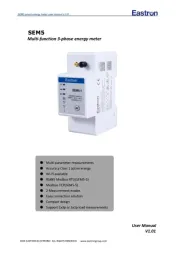
29 Juli 2025
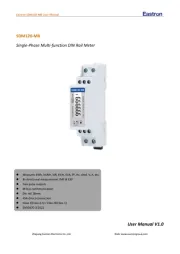
29 Juli 2025
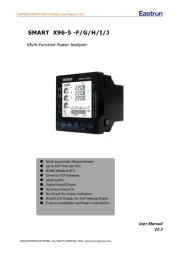
29 Juli 2025

29 Juli 2025
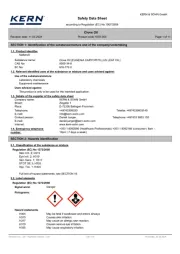
29 Juli 2025
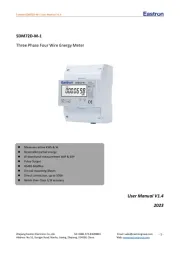
29 Juli 2025
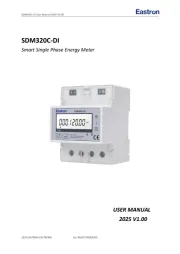
28 Juli 2025
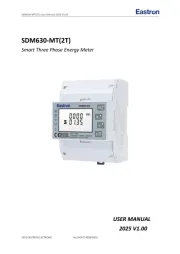
28 Juli 2025
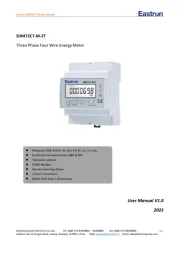
28 Juli 2025
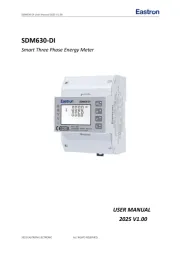
28 Juli 2025